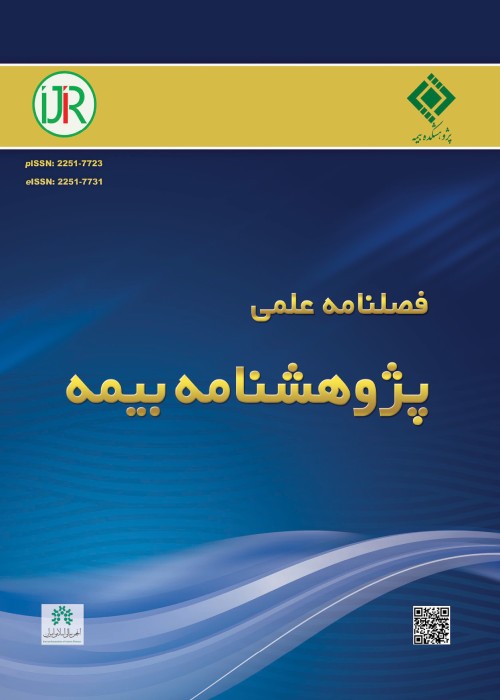Investigating the Audit Report Lag in the Insurance Industry with Emphasis on Financial Health and Earning Volatility Indices
This study investigates the relationship between the variables of financial health status and earnings volatility with the audit report lag in the insurance industry. Weak in financial health indicators can increase the likelihood of a company going bankrupt and expose the auditor to greater audit risk. Therefore, in such circumstances, it is necessary for the auditor to increase the scope of his proceedings and, by documenting the evidence, provide the necessary preparation and ability to defend his opinion against any possible future complaint. The natural result will be longer operating times and lag in issuing audit reports.Auditors may also consider higher or lower levels of earnings volatility as additional risk. On the one hand, more earnings volatility are less predictable; Therefore, there is likely to be a significant discrepancy between the auditor's expectation of earnings and the amount of earnings that the employer generates, and in these circumstances it may be challenging to make reliable accounting estimates; Especially estimates that face a lot of uncertainty. Auditors, on the other hand, may consider less earnings volatility as an additional risk; Because auditors' inference from fluctuating profits is aware of the risks of profit management.Because previous research has shown that lag in the audit report are a reasonable measure of an auditor's effort, if auditors view the firm's financial health and earnings volatility as an effective risk and adjust their efforts to respond to those risks, then are expected to have the firm's financial health indicators and also, the company's earnings indicators a significant relationship with the audit report lag. In this regard, Altman z score and risk-based capital ratios are considered as indicators of financial health and standard deviation of earnings during the five-year period and the percentage of annual changes in Dividend Per Share (DPS), as indicators of earnings volatility.This study has been able to participate in the development of research in this field by using several innovations. First, considering the important role of insurance companies in the development and economic security of societies, it has examined the factors affecting on the audit report lag (with emphasis on financial health indicators and earnings volatility) in this industry. Second, it contributes to timely financial reporting by showing that earnings volatility can affect on audit report lag. The results of this study help auditors better estimate audit risk by providing evidence that more earnings volatility as a sign of increased risk that requires additional audit effort. Also, using the risk-based capital criterion and Altman z3 score, which is specific to service companies, has attracted the attention of stakeholders and researchers to the specific financial health indicators suitable for insurance companies in examining related issues. This study can be considered by a wide range of stakeholders in the timeliness of financial reporting of insurance companies, such as insurance industry investors, insurers, managers, legislators, auditors and academics.
The statistical population of the study includes all insurance companies listed on the Tehran Stock Exchange and the OTC Iran. Due to the limited number of companies and the years of presence of these companies in the Iranian capital market, all available society that had the necessary conditions to conduct research have been studied. The test of research hypotheses was performed using ordinary least squares regression on the data of insurance companies listed on the stock exchange and over-the-counter, which provides a total of 51 observations of the company-year during the period 2017 to 2019.
Although there is a reasonable expectation that the financial health status of companies - especially in the insurance industry - will be considered by auditors and will be considered in assessing audit risks and planning the necessary efforts to perform audit operations; However, the findings indicate that the selected financial health indicators do not have a significant effect on the audit report lag. In addition, the findings show that the explanatory power of Altman z-score variables and the risk-based capital ratios are not significantly different from each other in terms of audit report lag.The results of the test of earnings volatility indices show that both indices of standard deviation of earnings during the five-year period and the percentage of annual changes in earnings per share have a positive effect on the audit report lag; The difference is that the percentage of annual changes in Dividend Per Share has a lower error level.
The results may indicate auditors' possible disregard for an important factor in corporate financial health; But there is a different interpretation, and that is the same situation of companies in terms of financial health. In other words, if the same economic reality exists for the companies under study, the researcher will make a measurement error and the results will not be inferred. Using the criterion set in the Altman model, only two Reinsurance companies are recognized as financially qualified and have a value of 1. The same is true of the risk-based capital ratios of insurance companies. Contrary to Altman Z's scores, most insurance companies have the risk-based capital ratios of more than 100% over the years, and have earned the first level of financial wealth. However, according to insurance standards in some countries (including the United States), the capital Ratio for insurance companies is considered 200%. If the insurance legislators in our country require a ratio of 200%, the results of the risk-based capital ratios will be similar to the Altman z score and only 4 insurance companies will be recognized as having financial health conditions. Finally, our interpretation of the results of this study is that in terms of accurate financial health indicators, most Iranian insurance companies have insufficient capital to cover their accepted risks, and Therefore, auditors are aware of this issue and have considered this issue in planning their audit operations. The fact that the average audit report lag in this industry is too high compared to other industries is a proof of this claim.
- حق عضویت دریافتی صرف حمایت از نشریات عضو و نگهداری، تکمیل و توسعه مگیران میشود.
- پرداخت حق اشتراک و دانلود مقالات اجازه بازنشر آن در سایر رسانههای چاپی و دیجیتال را به کاربر نمیدهد.




